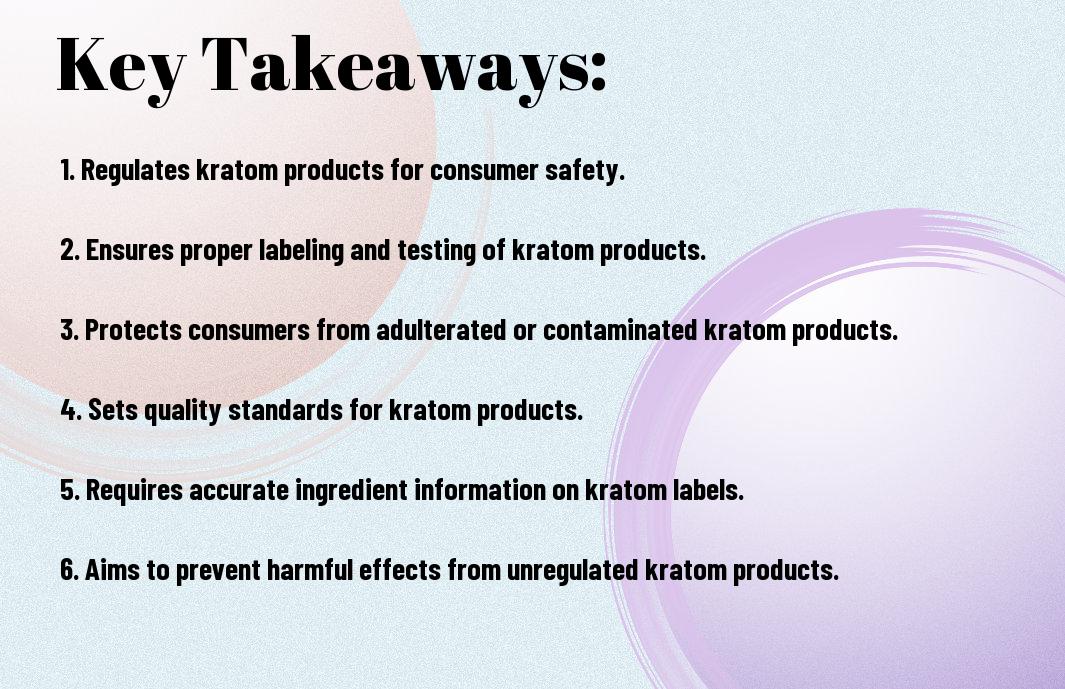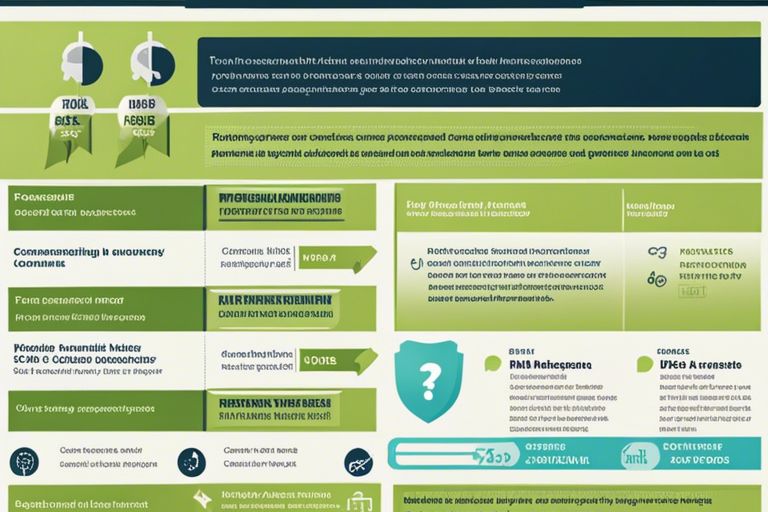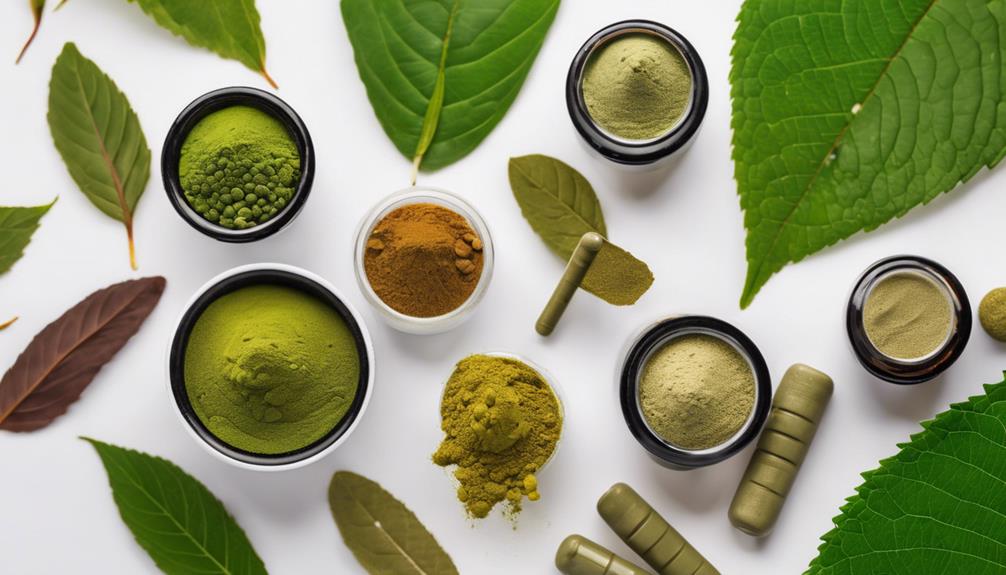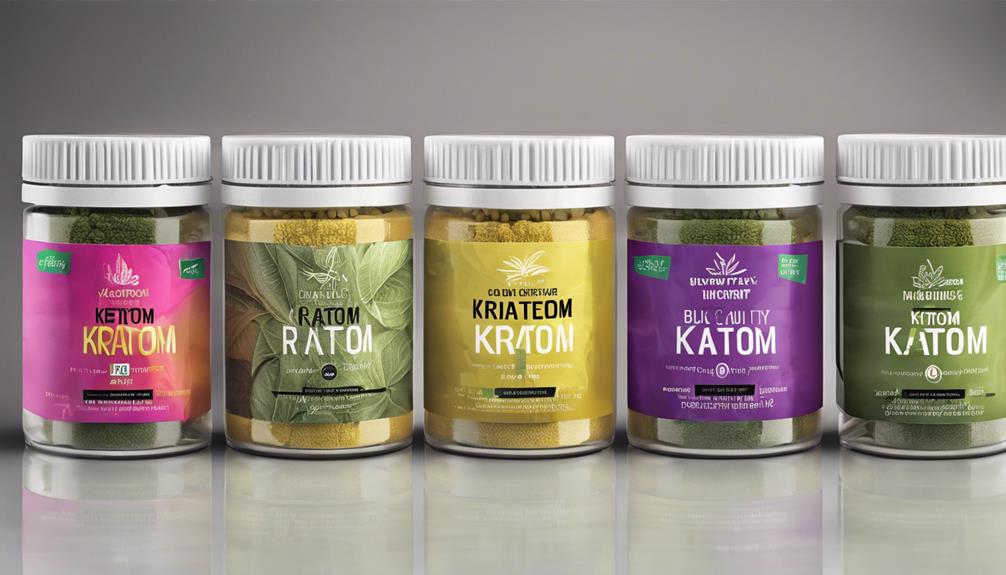Imagine a world where kratom users can trust the quality and purity of the product they consume. With the Federal Kratom Consumer Protection Act gaining momentum, this dream might soon become a reality. Dive into the details of this groundbreaking legislation that aims to protect consumers from contaminated and adulterated kratom products. Learn more about how this act could revolutionize the kratom industry and ensure the safety of its users. Check out the full bill here.
Key Takeaways:
- Regulation of Kratom: The Kratom Consumer Protection Act aims to regulate the production, distribution, and sale of kratom products to ensure the safety and quality of the products.
- Consumer Safety: This act provides provisions to protect consumers from adulterated or contaminated kratom products, ensuring that what they are purchasing is safe for consumption.
- Transparency and Accountability: By implementing this act, there is increased transparency in the kratom industry, and accountability is placed on manufacturers and sellers to adhere to quality standards.

Background of Kratom
Before submerging into the details of the Kratom Consumer Protection Act, let’s first understand the background of kratom.
What is Kratom?
To the uninitiated, kratom is a tropical tree native to Southeast Asia, known scientifically as Mitragyna speciosa. The leaves of the kratom tree contain compounds that have psychotropic (mind-altering) effects when consumed.
History of Kratom Use
History tells us that kratom has been used for centuries in traditional medicine practices in Southeast Asia. It was often brewed into a tea or chewed to help laborers combat fatigue and increase their productivity.
Despite its long history of use, kratom has recently gained popularity in the Western world as an alternative medicine for pain relief, anxiety, and opioid withdrawal symptoms.
The Need for Consumer Protection
Risks Associated with Kratom
For some individuals, kratom can be a controversial and potentially dangerous substance. Reports have linked kratom consumption to adverse effects such as respiratory depression, seizures, addiction, and even death. While it is true that many people use kratom without experiencing any negative consequences, the lack of quality control and standardized regulations in the industry can expose consumers to impure or contaminated products.
Lack of Regulation in the Industry
Industry experts have voiced concerns about the lack of oversight in the kratom market. Without proper regulations in place, consumers are at risk of purchasing products that may be adulterated with dangerous substances or inaccurate labeling. This lack of transparency can lead to unwitting consumers ingesting concentrations of kratom that are unsafe or ineffective.
It is necessary to implement stringent quality control measures and standards in the kratom industry to ensure that consumers are purchasing safe and reliable products. The absence of clear guidelines opens the door to unscrupulous vendors taking advantage of unsuspecting consumers, jeopardizing public health and safety.
Key Provisions of the Kratom Consumer Protection Act
Age Restrictions
Kratom is one of those things that can be incredibly beneficial if used responsibly, but like most good things, it’s not suitable for everyone. That’s why the Kratom Consumer Protection Act includes stringent age restrictions to ensure that only individuals who are 18 years or older can purchase and consume kratom products. This provision aims to protect minors from potential harm and abuse associated with kratom usage.
Labeling and Packaging Requirements
To guarantee transparency and consumer safety, the Kratom Consumer Protection Act mandates strict labeling and packaging requirements for all kratom products. Manufacturers must accurately label their products with information about the ingredients, dosage, and potential side effects. Moreover, kratom products must be securely packaged to prevent contamination and ensure their integrity.
It is important for consumers to be able to trust the products they are purchasing, especially when it comes to substances like kratom. By enforcing labeling and packaging requirements, the Kratom Consumer Protection Act empowers consumers to make informed decisions and protects them from unknowingly consuming adulterated or contaminated kratom products.
Testing and Quality Control
Control over the quality of kratom products is a crucial aspect of the Kratom Consumer Protection Act. This provision requires manufacturers to conduct thorough testing to ensure that their products are free from contaminants, such as heavy metals and pathogens. By implementing rigorous quality control measures, the Act aims to safeguard consumers’ health and well-being.
As consumers, we deserve to know that the kratom products we are using are safe and of high quality. The testing and quality control requirements set forth in the Kratom Consumer Protection Act serve as a safety net, providing us with the assurance that we are consuming kratom products that meet strict quality standards.
Benefits of the Kratom Consumer Protection Act
Increased Safety for Consumers
To ensure the safety of kratom consumers, the Kratom Consumer Protection Act mandates stringent quality control measures that all kratom products must adhere to. These regulations include testing for contaminants such as heavy metals, pesticides, and pathogens, as well as setting maximum allowable levels for these impurities. This increased oversight provides consumers with peace of mind knowing that they are purchasing a safe and high-quality product.
Standardization of Kratom Products
An important aspect of the Kratom Consumer Protection Act is the standardization of kratom products. By mandating that all products follow specific labeling requirements regarding ingredients and kratom alkaloid content, consumers can make informed decisions about their purchases. This standardization also helps prevent misleading marketing tactics and ensures that consumers receive the potency levels they expect.
Standardization of kratom products also aids in distinguishing between different strains, such as red vein, white vein, and green vein kratom, allowing consumers to choose the product that best suits their needs.
Reduced Risk of Contamination
The Kratom Consumer Protection Act significantly reduces the risk of contamination in kratom products. By implementing strict manufacturing practices and quality control standards, the act minimizes the chances of harmful substances making their way into kratom products. This not only protects consumers from potential health hazards but also enhances the overall reputation of the kratom industry.
For instance, the act requires that all kratom products undergo third-party testing to verify their safety and purity, ensuring that consumers are getting a reliable product every time they make a purchase.

Challenges and Controversies
Opposition from the Kratom Industry
After the introduction of the SB 842: Florida Kratom Consumer Protection Act, there has been pushback from some factions within the kratom industry. Some vendors argue that the regulations outlined in the act could stifle innovation and limit their ability to provide a diverse range of kratom products to consumers. They also express concerns about the additional costs associated with compliance, which could potentially drive up prices for consumers.
Concerns about Government Overreach
To address the issue of kratom regulation, some critics raise concerns about government overreach. They argue that implementing strict guidelines could pave the way for unnecessary restrictions on a natural substance that has been used for centuries. Critics fear that excessive regulation could infringe upon individuals’ rights to access kratom for personal use, potentially leading to a slippery slope of government intervention in other areas of personal freedom.
Opposition to the Kratom Consumer Protection Act from certain quarters revolves around the fear of excessive control and interference from regulatory authorities. The debate continues to be contentious as stakeholders across the board weigh in on the potential consequences of the proposed legislation.
Balancing Consumer Protection with Personal Freedom
Freedom
Challenges in implementing the Kratom Consumer Protection Act lie in finding a delicate balance between safeguarding consumer interests and respecting personal freedom. While regulations are crucial for ensuring product quality and safety, policymakers must navigate a fine line to avoid impeding individuals’ rights to choose how they use kratom. Striking a balance that protects consumers without overly restricting personal freedoms poses a significant challenge in the ongoing discussions surrounding kratom legislation.
Implementation and Enforcement
Role of Regulatory Agencies
For the Kratom Consumer Protection Act to be effective, regulatory agencies such as the Food and Drug Administration (FDA) and the Drug Enforcement Administration (DEA) must play a crucial role in monitoring and enforcing the regulations. These agencies will be responsible for overseeing the production, distribution, and sale of kratom products to ensure compliance with the act.
Penalties for Non-Compliance
An necessary aspect of the Kratom Consumer Protection Act is the establishment of penalties for non-compliance with the regulations. Violations could result in hefty fines, product seizures, or even criminal charges for egregious offenses. Stringent penalties are necessary to deter bad actors from endangering consumers with adulterated or contaminated kratom products.
It is imperative that these penalties are clearly outlined and strictly enforced to protect consumers and maintain the integrity of the kratom industry.
Education and Outreach Programs
NonCompliance with the Kratom Consumer Protection Act can lead to severe consequences for businesses found to be in violation of the regulations. Education and outreach programs will be crucial in helping kratom vendors understand and adhere to the requirements of the act. These programs can provide guidance on proper labeling, testing procedures, and quality control measures to ensure consumer safety.
Programs focused on educating both businesses and consumers about the benefits of buying kratom from compliant vendors can help build trust and transparency in the industry.
Final Words
Ultimately, the Kratom Consumer Protection Act serves as a vital piece of legislation designed to ensure the safety and well-being of consumers who choose to use kratom products. By implementing regulations that require transparent labeling, proper testing procedures, and quality control standards, this act aims to protect individuals from potentially harmful substances and unreliable products. It is a step in the right direction towards creating a safer marketplace for kratom enthusiasts while also addressing concerns about the unregulated nature of the industry.
FAQ
Q: What is the Kratom Consumer Protection Act (KCPA)?
A: The Kratom Consumer Protection Act (KCPA) is a piece of legislation aimed at regulating the sale and distribution of kratom products to ensure consumer safety and quality standards.
Q: What are the key provisions of the Kratom Consumer Protection Act?
A: The KCPA typically includes labeling requirements, age restrictions, testing for contaminants, and guidelines for proper packaging of kratom products.
Q: Why is the Kratom Consumer Protection Act important?
A: The KCPA is crucial for protecting consumers from potentially harmful or adulterated kratom products, ensuring they have access to safe and high-quality products.
Q: Which states have enacted the Kratom Consumer Protection Act?
A: Several states, including Arizona, Georgia, and Utah, have passed their versions of the Kratom Consumer Protection Act to regulate the sale of kratom products within their jurisdictions.
Q: How can I support the Kratom Consumer Protection Act?
A: You can reach out to your local representatives, advocacy groups, and organizations supporting kratom advocacy to voice your support for enacting the KCPA in your state.










